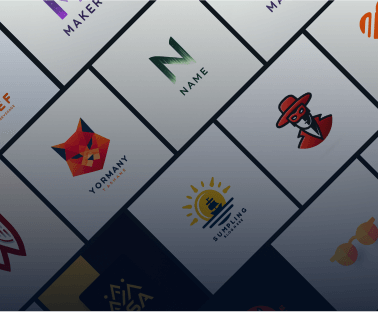A company loses 10 - 25% of its customers annually due to poor service or preference changes. This is why a strong customer retention rate is essential.
Effective customer retention means more clients return to avail of services or make repeat purchases. Meanwhile, 60% of consumers believe good customer service is the key to high customer retention.
In this article, discover the average customer retention rate of businesses from different industries and other related statistics. Read on.
Editor's Choice:
- In 2024, the media and professional service industries have the highest retention rate of about 84%.
- Boosting customer retention by 5% increases profits by between 25 to 95%.
- Due to poor customer service, businesses lose over $75 billion to $1.6 trillion annually.
- About 56% of customers stay loyal to a brand that prioritizes their needs.
- 81% of customers make purchasing decisions based on their trust in a brand.
What is the Average Customer Retention Rate Across all Industries?
The average customer retention rate across all industries is approximately 75.5%. Customer retention and brand loyalty in one's business shouldn't be neglected. Loyal customers are automatically the product's brand ambassador, thus reducing your customer acquisition cost (CAC).
In the next section, find out more information on customer retention rates across all industries.
Comparison of Customer Retention Rate by Industry
Media and professional services have the highest customer retention rate among various industries. Businesses from the hospitality sector have the lowest customer retention rate.
Read more about the latest statistics comparing customer retention rates among industries.
1. In 2024, the media and professional service industries have the highest retention rate of about 84%.
(Answer IQ)
Media and professional services have the highest customer retention rate, with 84%. The lowest is from the hospitality, travel, and restaurant industries, having a 55% retention rate.
Other industries with high customer retention rates include automotive, transportation, insurance, etc. See the table below for the complete list of customer retention rates across the different industries.
| Industry | Retention Rate |
| Media | 84% |
| Professional Services | 84% |
| Automotive & Transportation | 83% |
| Insurance | 83% |
| IT Services | 81% |
| Construction & Engineering | 80% |
| Financial services | 78% |
| Telecommunications | 78% |
| Healthcare | 77% |
| IT & Software | 77% |
| Banking | 75% |
| Consumer Services | 67% |
| Manufacturing | 67% |
| Retail | 63% |
| Hospitality, Travel, Restaurants | 55% |
2. Email is the best delivery method for customer retention at 89% in 2024.
(Business Wire)
About 89% of businesses use email to retain customers, while over 63% of marketers use social media engagement. Sending newsletters and tips at intervals about your product or service is one great way of retaining existing customers.
3. Boosting customer retention by 5% increases profits by between 25 to 95%.
(Hubspot)
Businesses that increase customer retention by 5% result in a 25 to 95% rise in profit. Moreover, 65% of a company's sales come from existing customers. Offering excellent customer service to have repeat customers is cheaper than spending money on getting new buyers.
4. Almost 3 in 4 customers switch to a competitor after one bad experience with a brand.
(Zendesk)
Bad customer service experience can cause businesses to lose customers. About 73% of consumers report that a bad interaction with a company makes them find other brands or products.
Even the most loyal customer will look elsewhere if faced with multiple bad experiences. Empathy for customers is essential when they reach out over an issue. If customers are poorly handled, it can push them to competitors.
5. Due to poor customer service, businesses lose over $75 billion to $1.6 trillion annually.
(Truelist)
Issues like misunderstanding the customer's desires and cost-cutting strategies can cause poor customer service. It can cause businesses to lose $75 billion to $1.6 trillion yearly.
In addition, paying attention to your customers' needs and complaints also greatly impacts customer service. Excellent customer service saves businesses much money compared to aggressive marketing and advertising.
| 💡 Did You Know? Lack of understanding of client demands or misreading market demand is the leading cause of startup failure, accounting for 42% of cases. To stay on trend, most businesses require extensive study into the market they are entering and its long-term prospects. |
6. Acquiring new customers costs 6 to 7 times more than retaining current ones.
(American Express, Signal Mind)
Retaining a customer is much cheaper than acquiring a new customer. Sales experts report that keeping existing customers is 7 times less expensive than acquiring new ones. The chance of selling to new customers is only 5 - 20% compared to 60 - 70% to former customers.
| 💡 Did You Know? Customer Relationship Management (CRM) tools like Salesforce increase client retention by improving the sales and service processes. A CRM system enables organizations to effortlessly access and update client information, track customer interactions, and manage customer complaints and requests. |
7. About 56% of customers stay loyal to a brand that prioritizes their needs.
(Zippia)
Over half of the customers return to a brand that understands their needs and preferences and attends to them as soon as possible. Good customer service goes a long way in retaining old customers, as customers wouldn't want to leave a brand that prioritizes and attends to their concerns promptly.
8. Over 74% reported staying loyal to a brand due to quality products.
(Zippia)
Product quality has an excellent impact on customer loyalty. A brand's high-value product or service inspired 74% of commitment to a brand. Companies that meet customers' expectations keep customers coming back for more.
Other than product quality, many factors make customers patronize the brand. See the table below.
| Factor | Percentage |
| Product quality | 74% |
| Value for money | 66% |
| Product consistency | 65% |
| Customer service | 56% |
| Easy shopping experience | 55% |
| Pricing | 54% |
9. 81% of customers make purchasing decisions based on their trust in a brand.
(Forbes)
Trust in a brand is a crucial factor for 81% of consumers when purchasing. Repeat customer statistics show that returning loyal customers, on average, spend 33% more per order than new customers.
Happy and satisfied customers are 87% more likely to purchase upgrades and new services. The value of a loyal customer can be up to 10 times their initial purchase.
10. Over 33% of customers will leave if the brand lacks personalization.
(The Wise Marketer)
Companies that get personalization right have the potential to generate 40% more revenue than those that don't, as over 33% of consumers abandon a brand that lacks personalization.
Customer retention statistics show that about 78% of Consumers are more likely to refer friends and family and even make repeat purchases from companies that personalize.
to content ↑Conclusion
A high customer retention rate benefits businesses' reputation and growth. It varies significantly in all industries and is affected by customer service, product quality, etc. However, retaining customers is challenging as user demands continuously shift with time.
Companies must know how to ensure consumers are loyal to their brands. Looking into customers' complaints and problems, offering rewards to loyal customers, and maintaining a polite, friendly relationship go a long way.
FAQs on Average Customer Retention Rates by Industry
What is considered a good customer retention rate?
The ideal customer retention rate depends on your industry; however, the general rate ranges from 35% to 84%.
What is the difference between retention and churn?
The churn rate is the percentage of customers that leave within a given time. In contrast, retention rate is the percentage of customers that stay with you.
How do you calculate the average customer retention rate?
The formula for customer retention rate is CRR=((E-N)/S) x 100. CRR means customer retention rate, and E (no. of people) is the number of customers acquired at the end of the selling period. N (months) is the number of periods measured, and S (no. of people) is the customer at the start of the estimated period.
Sources:






